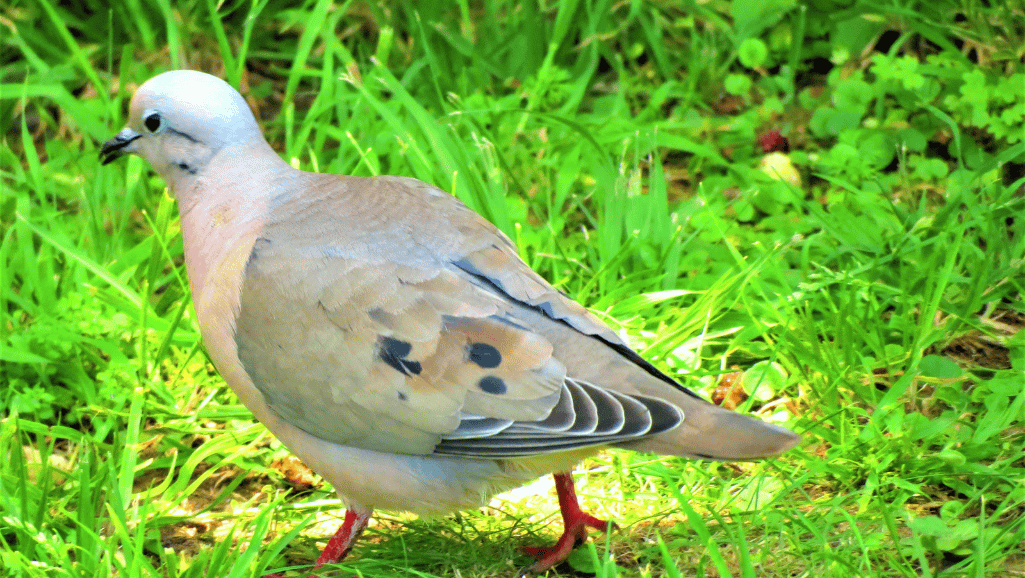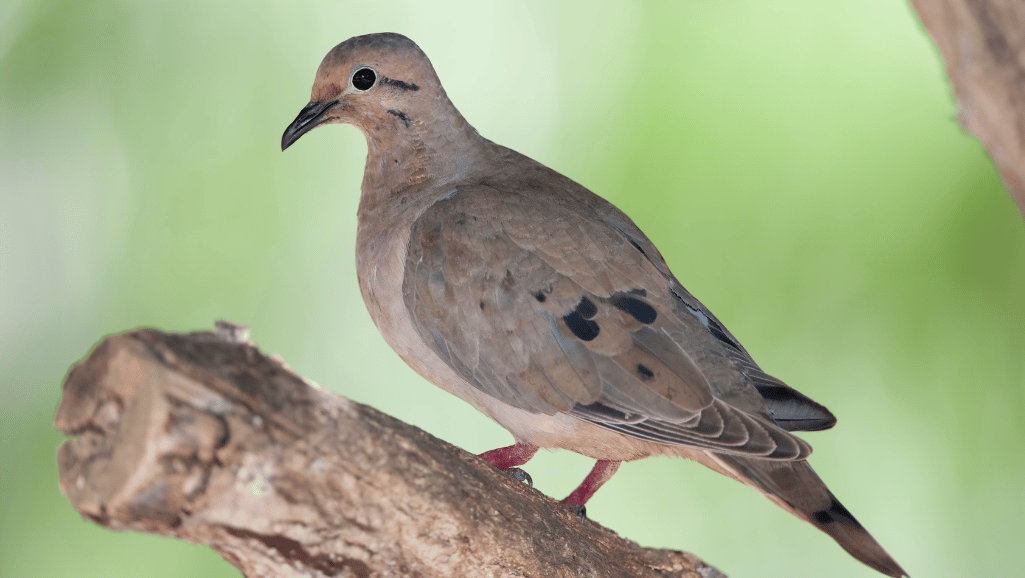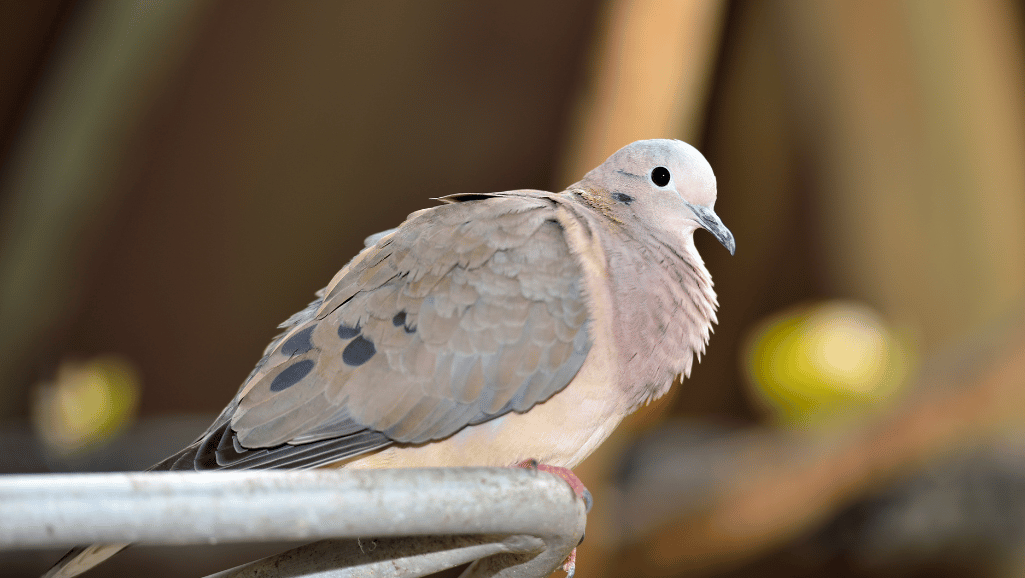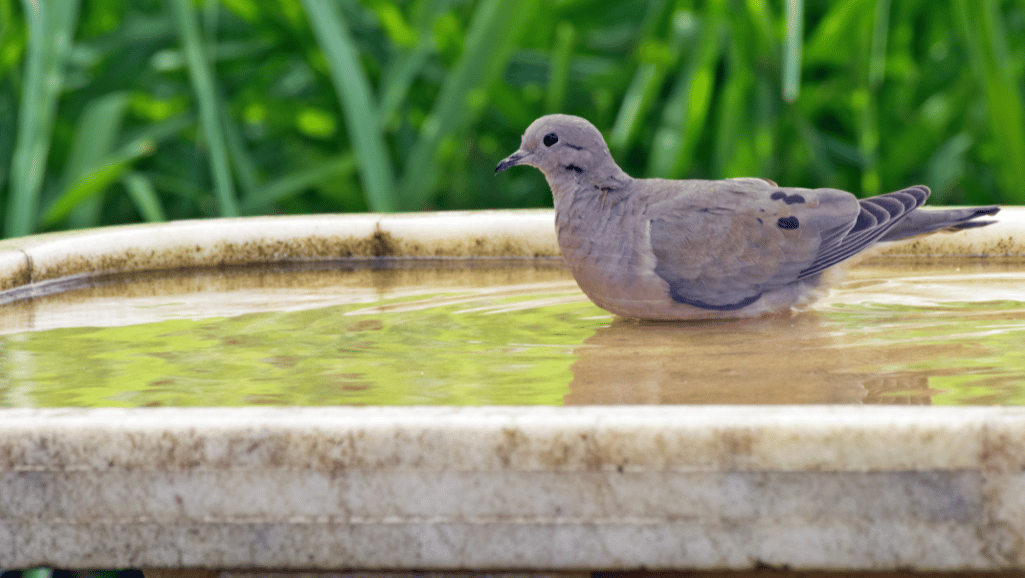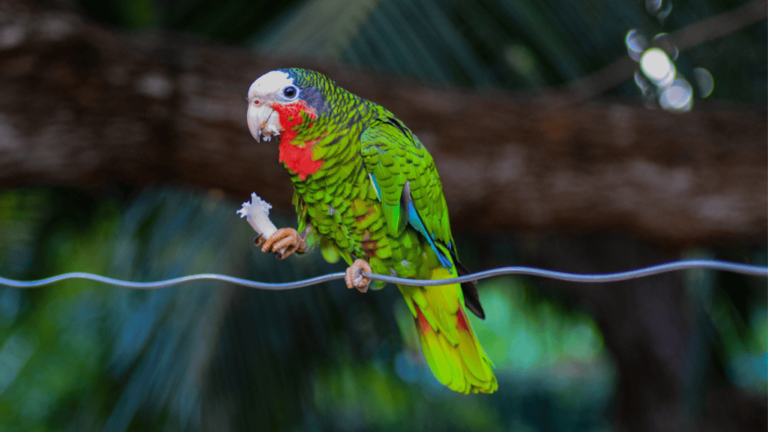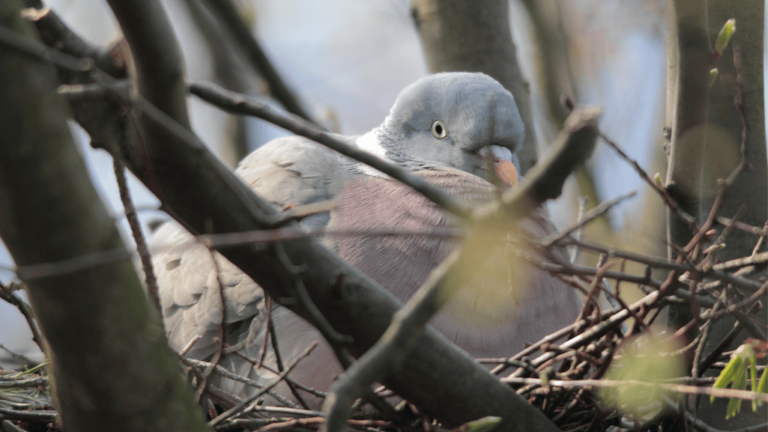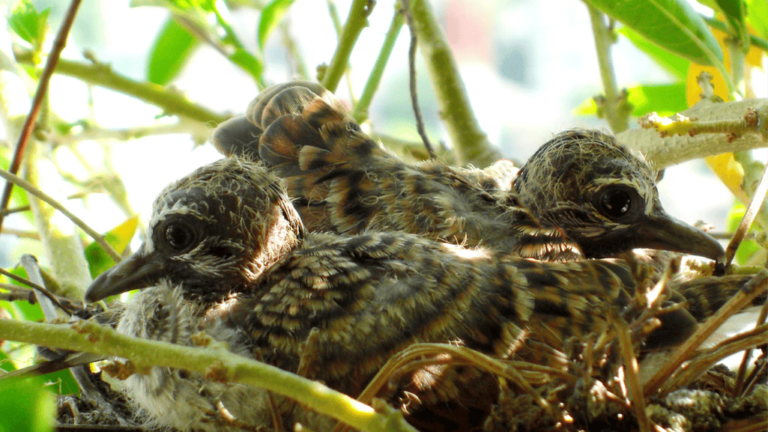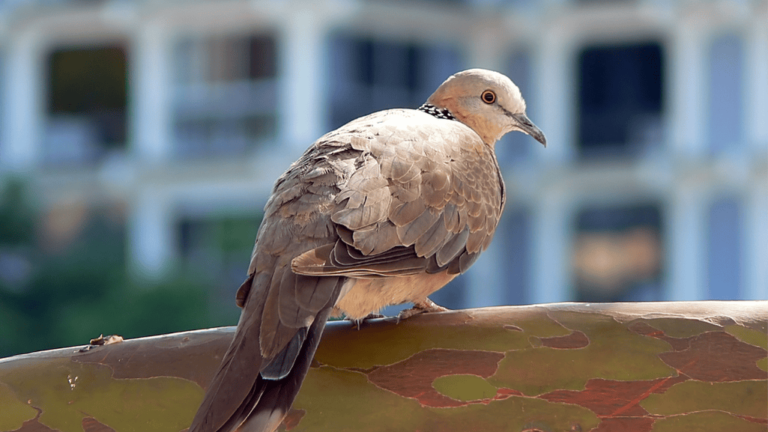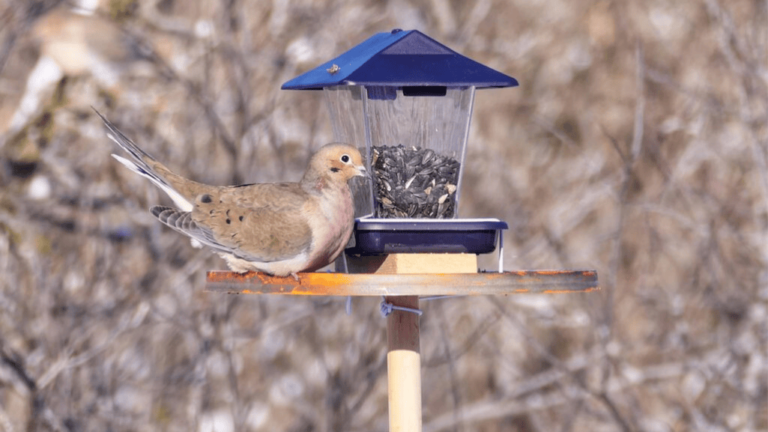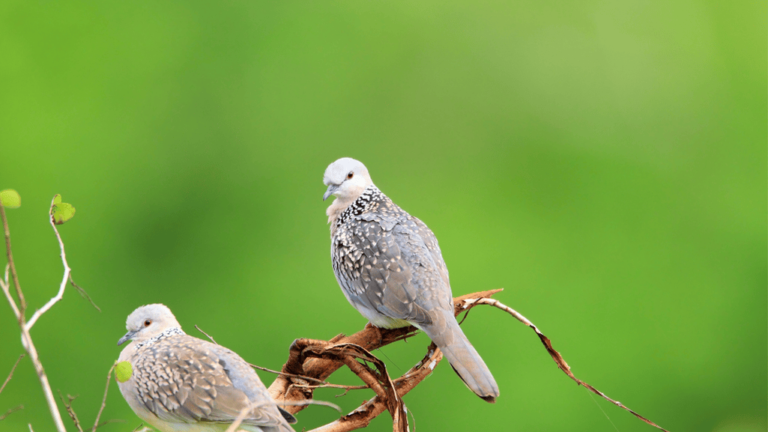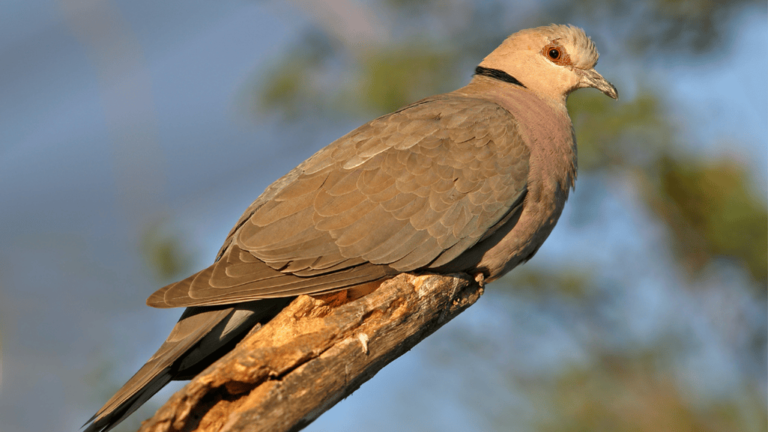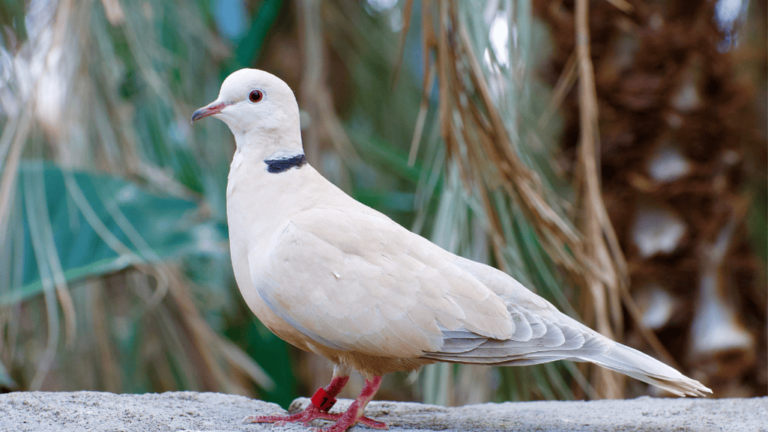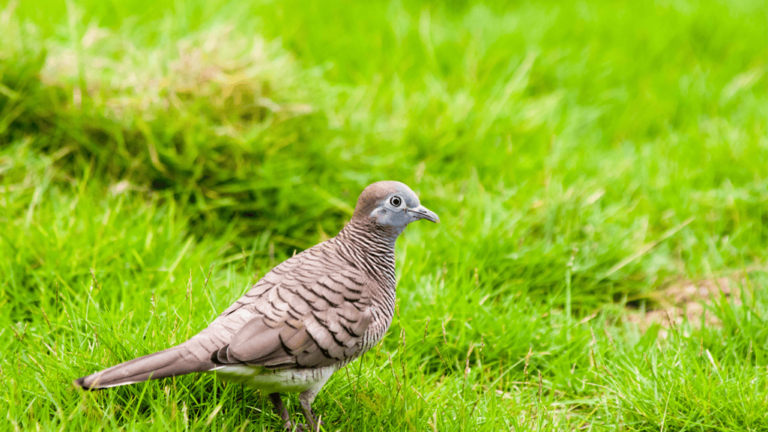The Eared Dove (Zenaida auriculata) moves from cities to quiet lands, from Trinidad to Argentina’s south. They are loved by birdwatchers for their simple beauty and complex ways. These birds adapt well to dry and city life, thanks to farming and cities.
Some times, many Eared Doves show up, flying over cities and farms together. As seasons change, they move and form big groups in the South American lowlands. This brings life to the areas after the wet season.
Key Takeaways
- The Eared Dove shows great strength, living in many places across South America and the Caribbean.
- Learning about the Eared Dove shows how well they adapt to human-made landscapes.
- Watching their behavior gives us deep insights into birdwatching.
- Their moves and breeding change with the seasons and farming.
- They like to gather together in big groups, seen in cities and farms.
The Eared Dove lives closely with us, eating mostly farmed seeds and sometimes being seen as pests. Birdwatchers see their social lives and how they adapt. This shows the beauty and challenges of living with humans.
Introduction to the Eared Dove (Zenaida auriculata)
The Eared Dove, known as Zenaida auriculata, is found in South America and the Caribbean. It stands out with its unique Eared Dove appearance. It has an olive-brown coat with black marks around the ears and wings. These marks give it a distinct look among doves.
Eared Dove behavior shows they move seasonally, affected by their surroundings. They act a lot like the Mourning Dove, known for its call and flexibility. For more info, check out Mourning Dove.
Researchers study the Eared Dove’s behavior and looks. They find it important for understanding their role in nature. In the breeding season, they become more active and vocal. This helps them find mates and defend their territory.
| Season | Behavior | Appearance Changes |
|---|---|---|
| January – June | Increased vocalization for mating | Molting of crown feathers |
| July – December | Foraging intensifies pre-migration | Coloration of crown feathers deepens |
Eared Doves change their behavior and looks with the seasons and for mating. These changes help them survive in different places from Colombia to Argentina. They are important for learning about bird adaptation and behavior.
The Geographical Range of the Eared Dove
The Eared Dove is a well-known bird species with interesting territorial behavior and migration patterns. It lives from the Caribbean to South America. Knowing where they live helps with conservation and birdwatching.
Native Regions and Territorial Expansion
The Eared Dove lives in many places, from Trinidad and the Caribbean to southern Argentina and Paraguay. They adapt to different environments, like dry lands and cities. Their large numbers in the Chaco region show how well they live in both nature and human-made areas.
They move into new areas because of farms and cities. These places give them food and places to live, helping them spread out. In cities, they live close to people without causing trouble, unlike many other animals.
Migration Patterns and Seasonal Movements
The Eared Dove migration is interesting to study because of its size and effects on South America. They move for food and to find places to breed. In Patagonia, they go to cities in the winter because it gets cold. In northeastern Brazil, they make big groups after the rains, increasing their numbers.
Where there’s more food, they have more babies. This happens when agriculture makes food easy to find. They match their breeding with the best times for finding food.
The table below shows important things about the Eared Dove habitat. It highlights how they adapt and what affects their behavior:
| Feature | Description |
|---|---|
| Geographical Spread | From the Caribbean to Southern Argentina and Paraguay |
| Typical Habitats | Scrublands, urban and suburban areas, agricultural lands |
| Migration Influence | Seasonally driven by food availability and breeding cycles |
| Interaction with Humans | High adaptability to urbanized settings, frequent in human presence |
Looking closely at the Eared Dove’s behavior helps us understand their world better. It also helps us protect them by making better places for them to live.
Understanding the Eared Dove Habitat
Eared Doves are amazing at adapting to different places, from dry lands to busy cities. This helps with Eared Dove conservation and keeps the natural ecosystem healthy. They fit well in many places, showing how flexible they are.
Scrublands to Urban Environments
These birds used to live in open lands and thin forests. Now, they’re moving to cities, escaping their dry homes. They make the most of city life, finding food and shelter in parks and gardens. This makes bird conservation in cities very important for their survival.
Foraging and Roosting Preferences
To understand how Eared Doves adapt, we need to look at what they eat. They mostly eat seeds and grains on the ground. They’ve learned to eat human-made food too, like crops. In cities, they often live together in big groups, showing they can live with people.
Eared Doves are very resilient and flexible. These traits help them survive in changing environments. Their ability to adapt is key to keeping ecosystems balanced. This shows why we need to focus on saving urban wildlife and why conservation is so important.
Unique Physical Characteristics of the Eared Dove
The Eared Dove appearance has many distinguishing features that make it stand out. It is 22 to 28 centimeters long and mostly gray or olive-brown. The neck area shines with a beautiful yellow-bronze iridescence, making it easy to spot.
It also has pinkish underparts, a black bill, and spots under its ears. These spots give it its name. Males are more colorful than females, who have duller colors.
Juveniles look less vibrant with narrow streaks on their breast and wings. They are less colorful than adults. This helps them blend in with their surroundings and affects their survival and mating.
- Primary color: Gray to olive-brown
- Iridescence: Yellow-bronze around the neck
- Bill: Black
- Underparts: Pinkish hue
- Spots: Distinct below the ears
The distinguishing features of the Eared Dove are key for birdwatchers. They help identify the species and understand its behavior and habitat. These traits are important for science and add to the story of biodiversity.
Discovery of the Eared Dove Diet
The Eared Dove is known for its ability to adapt and survive. It mainly eats seeds and grains. This shows how it can live in different places and its effect on farms.
Seeds and Grains: Feeding Habits
85% of the Eared Dove’s food is seeds from crops like millet, wheat, and sorghum. They also eat sunflowers, peanuts, and maize, but not as much. These foods are found mainly in places like Colombia and Venezuela. They eat some wild plants too, mostly grasses.
Agricultural Impact and Adaptations
The Eared Dove eats a lot of crops, making them pests. In Argentina, they live in big groups, with over 23 million birds in some areas. This can cause a lot of damage to crops.
These doves breed when crops are ready, showing how they depend on farming. Their large numbers make their effect on farming worse. But, they are very good at adapting.
Here’s a table that shows how Eared Doves affect farming in different places:
| Country | Primary Eared Dove Food Sources | Estimated Population | Impact on Crops |
|---|---|---|---|
| Argentina | Wheat, Millet, Sorghum | 23-32 million | High crop consumption, frequent breeding |
| Colombia | Sunflower, Peanuts | Data Not Available | Moderate crop damage |
| Bolivia | Grain raided from crops | Significant increase | Seasonal crop raiding (May-September) |
Understanding what the Eared Dove eats and how they live helps us manage their numbers. This is important for farmers and for the doves’ place in nature.
Behavioral Traits and Social Structure
The Eared Dove is a fascinating bird in the Columbidae family. It shows unique social behavior and adaptability. Their social structures tell us a lot about how they survive and interact with their environment.
Social Flocks: Patterns of Aggregation
The Eared Dove is known for its social behavior. It often forms large flocks that are key to its survival. These flocks help the birds find food and avoid predators, showing the power of being together.
Columbids, including the Eared Dove, have different flocking behaviors. Some birds prefer to be alone, while others gather in huge groups. In the past, some flocks were so big they even blocked out the sun.
Adaptability and Interactions with Humans
The Eared Dove has adapted well to urban environments. It’s similar to North America’s Rock Pigeons in this respect. These birds take advantage of city resources and human-wildlife interactions, eating scraps in parks and streets.
This has made them more visible and led to a close relationship with humans. It has also affected how people see them and how they are protected.
| Flocking Behavior | Survival Strategy | Dietary Consumption |
|---|---|---|
| Large, cohesive groups | Enhanced predator evasion | 12 to 20 percent of body weight daily |
| Varies from solitary to several thousand | Resource localization | Primarily seeds and grains |
| Historical records of up to two million | Communal roosting benefits | Opportunistic urban foraging |
The Eared Dove’s social nature and adaptability help it thrive. They also show us how urban adaptation affects wildlife.
Eared Dove Reproduction and Mating Rituals
The Eared Dove mating ritual is a captivating display of bird behavior. It’s vital for those who love birds and study their ways. These doves live from the Caribbean to southern Argentina. They have behaviors that help them survive and reproduce in different places.
Avian courtship behaviors include dances and calls to find a mate. When it’s mating time, males show off their tail patterns and make unique coos. This helps strengthen their bond with a mate and keeps their numbers up in various habitats.
In places like northeastern Brazil and Argentina, eared doves gather in huge groups, sometimes with millions of birds. This colonial breeding happens when food is plentiful. They usually lay two eggs per nest, and about 52% of these nests successfully raise at least one chick.
These doves are also found in cities and farms, making them seen as pests. They eat seeds and grains, which can harm crops. In places like Córdoba, Argentina, they live in huge numbers, affecting the local environment and farming.
To learn more about helping birds, check out tips on feeding and keeping them happy at The Finch Bird Care Guide.
Learning about the Eared Dove mating ritual and avian courtship behaviors helps us understand their role in nature. It also helps us manage their impact on agriculture and cities better.
The Stages of Eared Dove’s Breeding Cycle
The Eared Dove’s breeding cycle is a complex process full of flexibility and resourcefulness. This bird can fly up to 55 mph, making it a key player in its breeding success across North and South America. It breeds year-round in some areas, like Colombia and Argentina’s Córdoba Province.
Building nests is crucial for the Eared Dove’s success. They lay about two eggs, which take 14 days to hatch. After hatching, the young birds need 12 to 15 days of care before they leave the nest. The breeding cycle is linked to the environment, peaking after rainy seasons when food is plentiful.
Studies on the Galapagos Doves, a relative of the Eared Dove, show similar patterns. These behaviors vary by habitat.
The Eared Dove is a pest for farmers, forming large flocks that harm crops. Yet, it has thrived, with millions in northern Argentina. Its resilience highlights the need for humans and birds to live together sustainably. This is a key topic in articles on exotic pets. Understanding these cycles helps with conservation and managing human and bird populations.


